Idea by
Caterina Selva
Call for ideas 2018
Landscapes of coexistence
Landscapes of coexistence
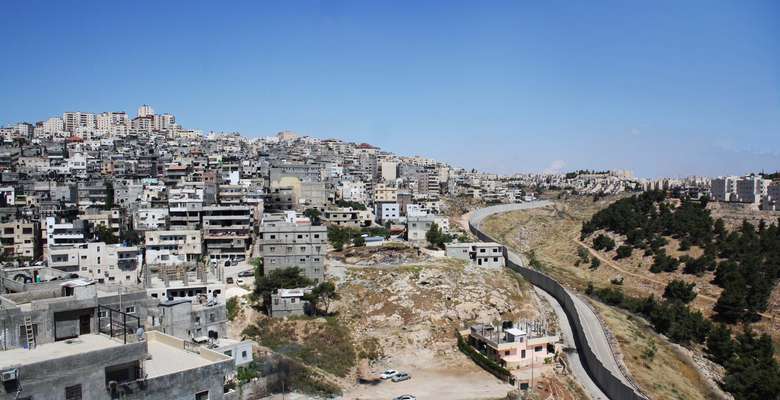
As part of a broader investigation over geopolitical and human geographies of the contested territory of Jerusalem and Shu’fat Refugee Camp, the project aims at instigating an area of exchange and negotiation promoting human interaction through the use of nature and its spontaneous growth. Without neglecting the reality of the conflict it proposes a creative fiction that can better narrate possibilities of transformation. In the proposed imagined landscape nature works together with human practices in the production of alternative realities. It expands in the space with its own time of growth and allows for the playful subversion of enforced patterns of movement, softly sabotaging hard borders of control. Over a time line of twenty years the forest grows in the area, mending multiple forms of interaction and generating a new ecology of flora and fauna that will eventually swallow the physical presence of the wall releasing the human body from its mental and material constrictions.
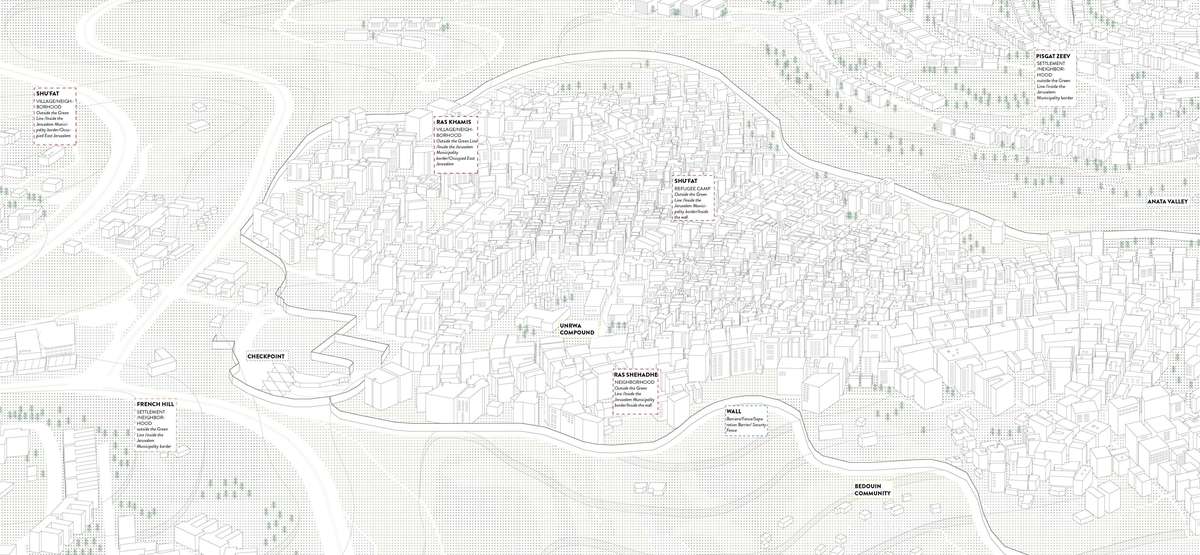
The mapping of the areas forming the enclave and of their relations with the outer parts allows for the visualization of borders of inclusion and exclusion, stressing the intricacy of a territory continuously reorganized around lines and frontiers of power. Different connected ecologies come to the surface, rendered visible inside the complexity of the macro system.

A number of institution and funders cooperate in the realization of this forest and landscape restoration (FLR) proposal in a scenario of beyond politica/beyond national exchange with the Food and Agriculture Agency of the United Nation and the United Nation Environmental Protection Agency acting as a coordinators and warranting authorities out of the conflict discourse.
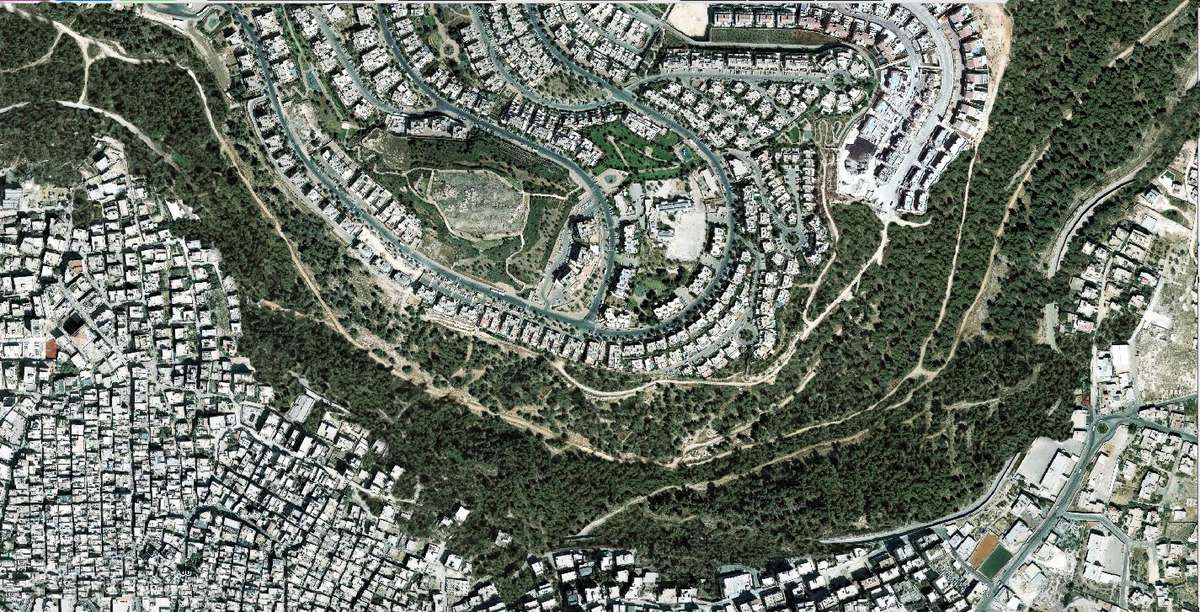
The forest strongly conquers its autonomous space creating a new open territory, outside the geopolitical power scheme. Trees themselves challenge the shifting borders creating new connections between natural elements and human beings: while trees grow and start the appropriation process, ecological dispersal of genes flow activates new realities in the outer landscape resonating with the inner enclaves.
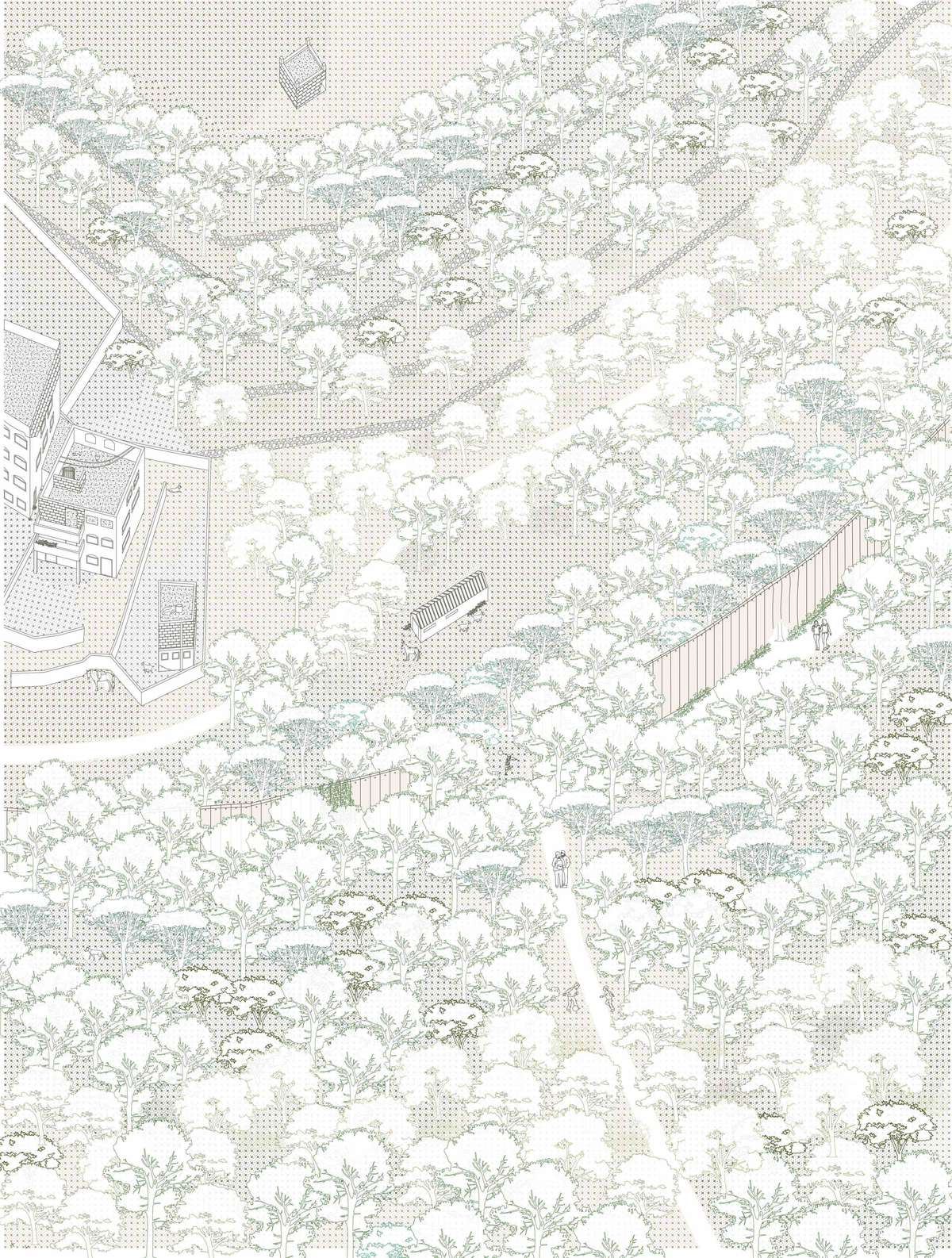
A community based forest management guarantees interaction between the human populations mending forgotten social behaviors and encounters. As opposed to the physical or imagined confinement of the inhabitants, the forest opens a framework for the collective use of space.
Landscapes of coexistence
Landscapes of coexistence

As part of a broader investigation over geopolitical and human geographies of the contested territory of Jerusalem and Shu’fat Refugee Camp, the project aims at instigating an area of exchange and negotiation promoting human interaction through the use of nature and its spontaneous growth. Without neglecting the reality of the conflict it proposes a creative fiction that can better narrate possibilities of transformation. In the proposed imagined landscape nature works together with human practices in the production of alternative realities. It expands in the space with its own time of growth and allows for the playful subversion of enforced patterns of movement, softly sabotaging hard borders of control. Over a time line of twenty years the forest grows in the area, mending multiple forms of interaction and generating a new ecology of flora and fauna that will eventually swallow the physical presence of the wall releasing the human body from its mental and material constrictions.
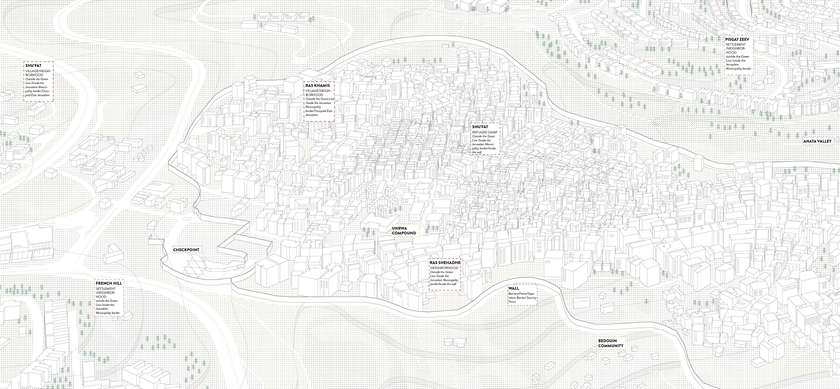
The mapping of the areas forming the enclave and of their relations with the outer parts allows for the visualization of borders of inclusion and exclusion, stressing the intricacy of a territory continuously reorganized around lines and frontiers of power. Different connected ecologies come to the surface, rendered visible inside the complexity of the macro system.
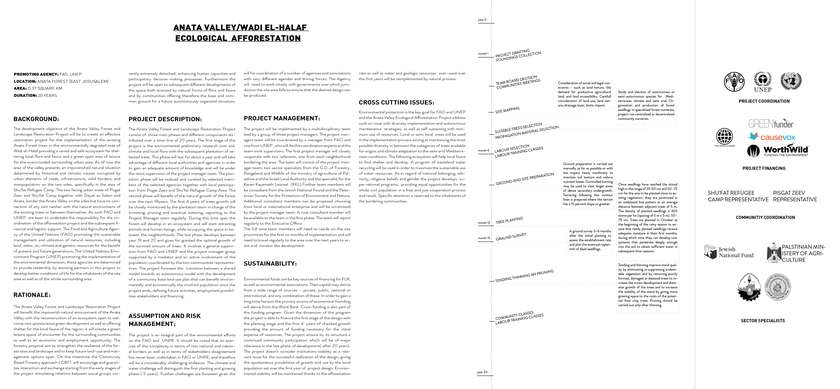
A number of institution and funders cooperate in the realization of this forest and landscape restoration (FLR) proposal in a scenario of beyond politica/beyond national exchange with the Food and Agriculture Agency of the United Nation and the United Nation Environmental Protection Agency acting as a coordinators and warranting authorities out of the conflict discourse.

The forest strongly conquers its autonomous space creating a new open territory, outside the geopolitical power scheme. Trees themselves challenge the shifting borders creating new connections between natural elements and human beings: while trees grow and start the appropriation process, ecological dispersal of genes flow activates new realities in the outer landscape resonating with the inner enclaves.
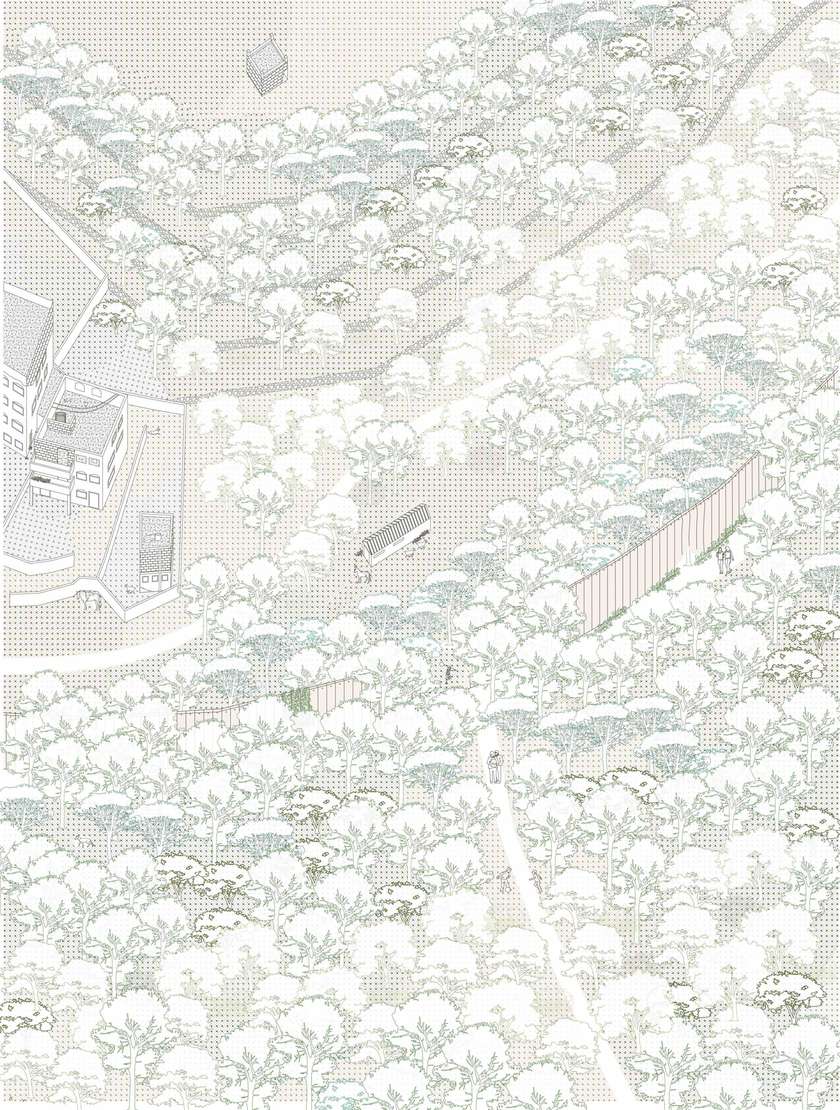
A community based forest management guarantees interaction between the human populations mending forgotten social behaviors and encounters. As opposed to the physical or imagined confinement of the inhabitants, the forest opens a framework for the collective use of space.